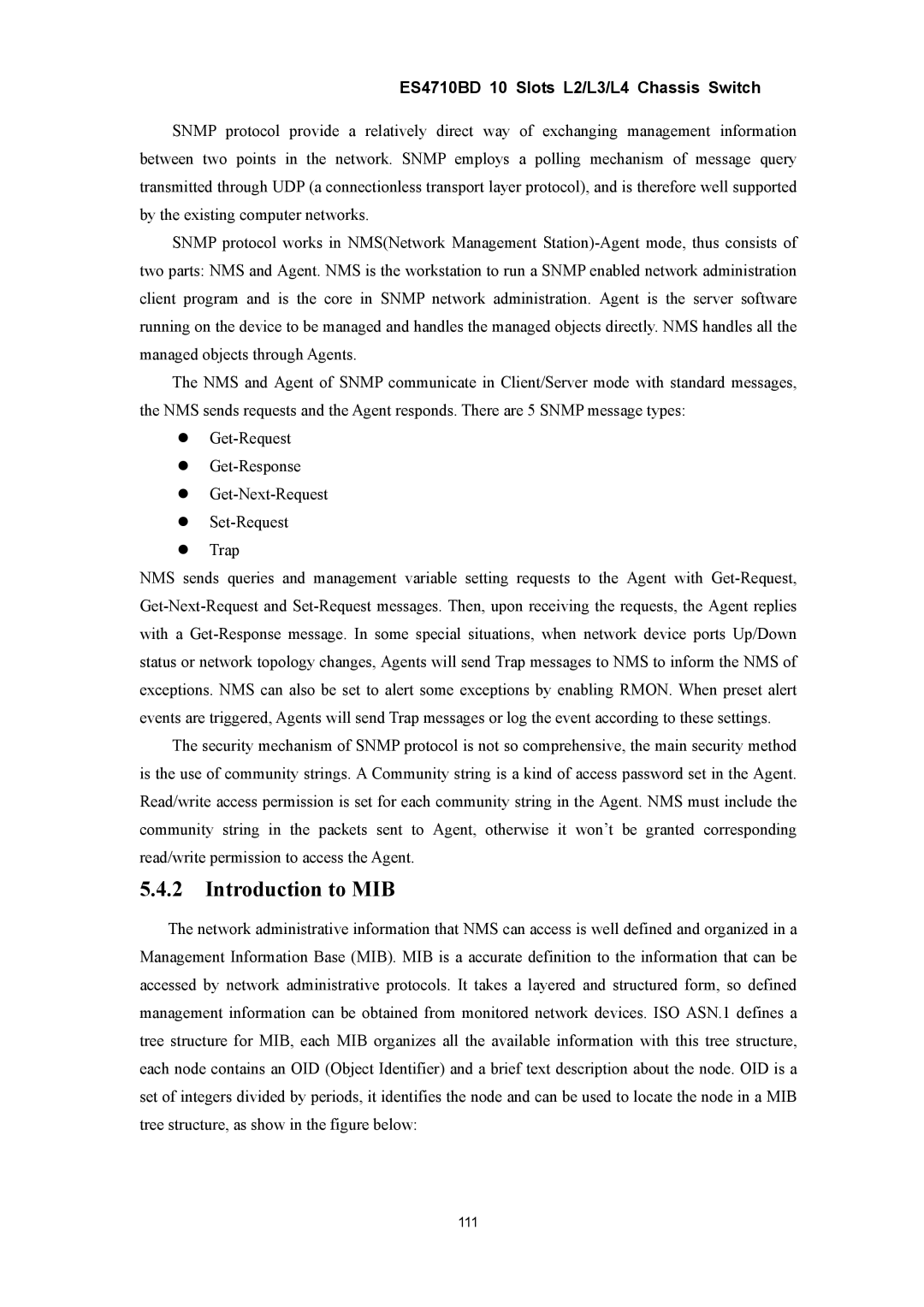ES4710BD 10 Slots L2/L3/L4 Chassis Switch
SNMP protocol provide a relatively direct way of exchanging management information between two points in the network. SNMP employs a polling mechanism of message query transmitted through UDP (a connectionless transport layer protocol), and is therefore well supported by the existing computer networks.
SNMP protocol works in NMS(Network Management
The NMS and Agent of SNMP communicate in Client/Server mode with standard messages, the NMS sends requests and the Agent responds. There are 5 SNMP message types:
z
z
z
z
zTrap
NMS sends queries and management variable setting requests to the Agent with
The security mechanism of SNMP protocol is not so comprehensive, the main security method is the use of community strings. A Community string is a kind of access password set in the Agent. Read/write access permission is set for each community string in the Agent. NMS must include the community string in the packets sent to Agent, otherwise it won’t be granted corresponding read/write permission to access the Agent.
5.4.2Introduction to MIB
The network administrative information that NMS can access is well defined and organized in a Management Information Base (MIB). MIB is a accurate definition to the information that can be accessed by network administrative protocols. It takes a layered and structured form, so defined management information can be obtained from monitored network devices. ISO ASN.1 defines a tree structure for MIB, each MIB organizes all the available information with this tree structure, each node contains an OID (Object Identifier) and a brief text description about the node. OID is a set of integers divided by periods, it identifies the node and can be used to locate the node in a MIB tree structure, as show in the figure below:
111
